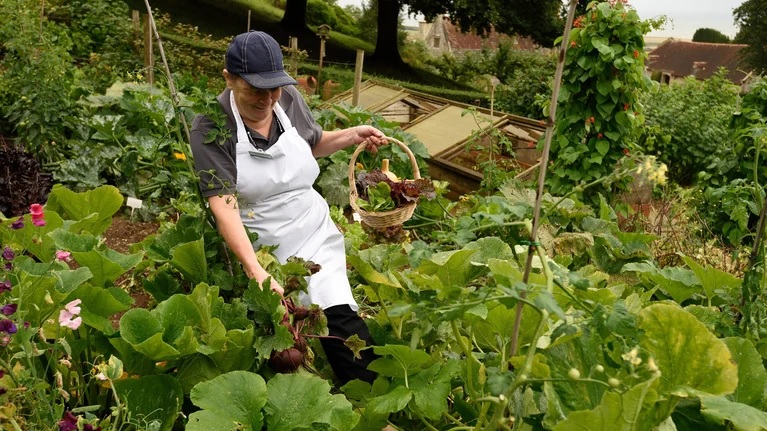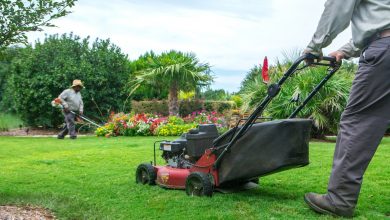The ultimate seasonal guide to vegetable gardening

Welcome to the ultimate seasonal guide to vegetable gardening, where we embark on a journey to cultivate bountiful harvests throughout the year. Vegetable gardening is not only a rewarding and satisfying hobby but also a pathway to a healthier, more sustainable lifestyle. Whether you’re a seasoned gardener or just getting your hands dirty for the first time, this comprehensive guide will walk you through the steps to grow a diverse array of fresh, nutritious vegetables that thrive in each season.
Gardening according to the seasons allows us to work in harmony with nature, maximizing yields and producing a diverse range of crops. As the climate and weather change throughout the year, so do the requirements of our vegetable plants. By understanding the unique needs of each season, we can optimize planting times, choose appropriate varieties, and implement the best care practices to ensure success.
From the vibrant greens of spring to the warm abundance of summer, the vibrant colors of fall, and the surprising possibilities of winter, this guide will provide you with the knowledge and tools needed to transform your backyard into a flourishing vegetable paradise. Whether you have limited space, a vast garden plot or are just looking to improve your lawn, whether you’re in the sun-drenched South or the cooler North, this guide will help you tailor your gardening efforts to your specific location and conditions.
So, grab your gardening gloves and let’s dive into the world of seasonal vegetable gardening. Together, we’ll sow the seeds of knowledge and reap the rewards of a bountiful harvest all year round. Get ready to experience the joy of nurturing your plants from seed to table and savor the taste of the freshest, homegrown vegetables you’ll ever enjoy. Let’s get growing!
Spring Vegetable Gardening:
As the chilly winter months gradually give way to warmer temperatures and longer days, it’s time to embrace the joys of spring vegetable gardening. Before planting, take the time to prepare the soil and choose the perfect location for your vegetable patch. Ensure the soil is well-draining, nutrient-rich, and free from weeds to provide a healthy environment for your plants to thrive.
In the early spring, kick-start your gardening endeavors with cool-season vegetables that relish the milder weather. Consider planting delightful options like sweet peas, crisp lettuce, and nutrient-packed spinach. These crops can tolerate cooler temperatures and even withstand a light frost, making them ideal choices for the early spring garden.
As spring progresses, transition to mid-spring vegetables, such as crunchy carrots, flavorful beets, and vibrant radishes. These root vegetables will develop best in the warming soil and will reward you with a harvest of delicious and nutritious produce.
By the time late spring arrives, the risk of frost should have passed in most regions, allowing you to introduce heat-loving vegetables to your garden. Plant robust tomatoes, colorful bell peppers, and refreshing cucumbers to relish the taste of homegrown summer salads and salsa.
To ensure your spring vegetable garden thrives, keep a few essential care tips in mind. Regularly water your plants, aiming to keep the soil consistently moist but not waterlogged. Apply a layer of organic mulch to retain soil moisture and suppress weeds. Keep an eye out for pests and diseases, addressing any issues promptly to protect your plants.
With your spring garden off to a fruitful start, let’s explore the delights of summer vegetable gardening, where the warm sun and longer days work their magic on our crops, ensuring a season of abundance and flavor.
Summer Vegetable Gardening:
As the summer sun shines brightly upon your garden, it’s time to revel in the pleasures of summer vegetable gardening. However, the scorching temperatures and pest activity can pose challenges to your precious plants. To ensure a bountiful harvest, it’s essential to protect your garden from heat stress and pesky invaders.
Shield your plants from excessive heat by providing some shade during the hottest parts of the day. You can use shade cloths or strategically plant taller crops to create natural shade for more delicate vegetables. Regularly inspect your plants for signs of stress, such as wilting leaves, and promptly water them to revive their vigor.
In the summer garden, you’ll have the opportunity to grow a diverse array of warm-season vegetables that thrive in the heat. Consider planting versatile squash and zucchini, abundant beans that come in various colors and sizes, and flavorful eggplants. These vegetables love the warmth and will reward you with an abundant harvest.
To maximize yields and promote healthy growth, proper watering and mulching are paramount. Water deeply and consistently, ensuring that your plants receive adequate moisture during dry spells. Apply mulch around your plants to conserve soil moisture, regulate soil temperature, and suppress weeds.
While tending to your summer garden, you may encounter some common challenges. Keep a vigilant eye on pests like aphids, caterpillars, and spider mites that flourish in warm weather. Implement organic pest control methods to protect your plants without harming beneficial insects.
With your summer garden thriving and providing a delightful bounty of fresh produce, let’s explore the wonders of fall vegetable gardening, where the cooler temperatures create an ideal environment for certain crops to flourish and extend your harvest season.
Fall Vegetable Gardening:
As the warm days of summer gently transition into the crispness of fall, it’s time to embark on a second growing season and relish in the wonders of fall vegetable gardening. With a little planning and preparation, you can continue to enjoy an abundance of fresh produce well into the cooler months.
Prepare your garden for the second growing season by clearing out any spent summer crops and refreshing the soil. Adding compost or well-rotted manure will replenish nutrients and create a fertile environment for fall plantings.
Cool-season vegetables take center stage in the fall garden. Consider planting nutrient-packed broccoli, nutrient-rich kale, and the versatile cauliflower. These crops thrive in the cooler temperatures and will provide a delicious harvest that is both nutritious and satisfying.
To extend the harvest season and protect your plants from frost, utilize row covers and cold frames. Row covers act as a protective barrier against chilly temperatures, while cold frames provide a mini-greenhouse effect to shield tender plants from the cold. These tools allow you to grow delicate greens and herbs well into the winter.
As you harvest the final bounty of your fall garden, consider preserving the excess crops for the winter months. Techniques like canning, freezing, and drying will enable you to savor the flavors of your harvest even when the snow blankets the ground.
Now, let’s explore the exciting possibilities of winter vegetable gardening, where the magic of gardening continues, even amidst the frosty embrace of winter. With careful planning and suitable crops, you can continue to enjoy the delight of fresh homegrown produce throughout the coldest months of the year.
Winter Vegetable Gardening:
As the winter chill sets in and snow blankets the ground, don’t let the cold weather deter you from indulging in the joys of winter vegetable gardening. While outdoor gardening may be limited during this season, there are various indoor and greenhouse options that allow you to continue your gardening journey.
Indoor gardening provides a cozy and controlled environment for your plants. Utilize sunny windowsills or invest in grow lights to provide the much-needed light for your winter greens. Herbs like basil, parsley, and cilantro, as well as leafy vegetables such as arugula and spinach, thrive in indoor settings.
Greenhouses offer a more substantial space for winter gardening, enabling you to grow a broader range of cold-hardy vegetables. Swiss chard, kale, and collard greens are excellent choices for greenhouse gardening during the winter months. The controlled environment inside a greenhouse protects your plants from extreme temperatures and offers a haven for them to flourish.
As you embark on your winter gardening journey, remember to provide adequate care and protection for your plants. Watering requirements may differ during the colder months, so adjust your watering schedule accordingly. Mulching around the base of your plants helps conserve soil moisture and protects the root system from the cold.
Winter is also an ideal time to plan for the upcoming spring season. Consider starting seeds indoors to get a head start on your spring garden. Research and choose the vegetable varieties you wish to grow, and plan the layout of your garden beds.
By embracing winter vegetable gardening, you can keep your green thumb active and enjoy fresh and nutritious produce during the coldest months. As the seasons change and the days grow longer, it’s time to transition into year-round gardening tips, allowing you to savor the pleasures of gardening all year long.






